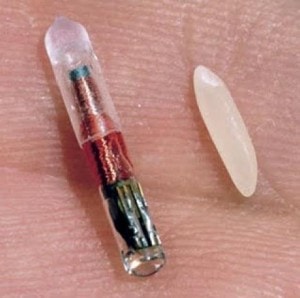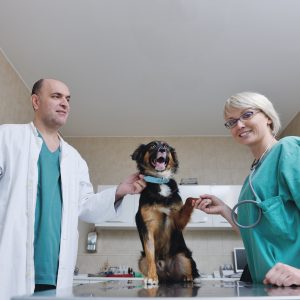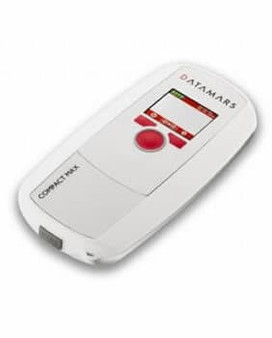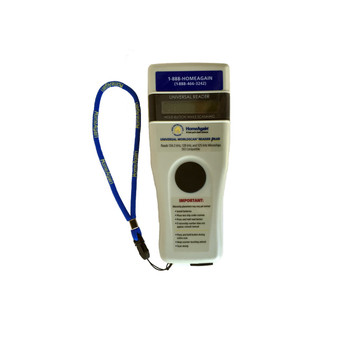- Travel Planning Center
- Ticket Changes & Refunds
- Airline Partners
- Check-in & Security
- Delta Sky Club®
- Airport Maps & Locations
- Flight Deals
- Flight Schedules
- Destinations
- Onboard Experience
- Delta Cruises
- Delta Vacations
- Delta Car Rentals
- Delta Stays
- Onboard Wi-Fi
- Delta Trip Protection
- How to Earn Miles
- How to Use Miles
- Buy or Transfer Miles
- Travel with Miles
- SkyMiles Partners & Offers
- SkyMiles Award Deals
- SkyMiles Credit Cards
- SkyMiles Airline Partners
- SkyMiles Program Overview
- How to Get Medallion Status
- Benefits at Each Tier
- News & Updates
- Help Center
- Travel Planning FAQs
- Certificates & eCredits
- Accessible Travel Services
- Child & Infant Travel
- Special Circumstances
- SkyMiles Help

International & Connection Pet Travel
* For aircraft that have only one class cabin, a maximum of 4 kennels per aircraft is allowed. **Live animals are prohibited on all flights operating outside of the U.S. except Canada. To make sure your pet is taken care of, prior arrangements are necessary with all the carriers involved. If a pet has to transfer from a Delta flight to a Delta Connection, the Delta flight must be confirmed at least 48 hours before the scheduled departure time of the Delta Connection flight. That way we have enough time to make transfer arrangements between the two carriers and ensure your pet is safely delivered. Find More Information on Shipping Your Pet »
Pets to Hawaii
Though Hawaii is part of the United States, Hawaii takes extra care when bringing live animals into the state due to its unique ecosystems. Hawaii requires that all live animals shipped or brought into the state have health and rabies inoculation certificates dated no more than 10 days before travel begins. On Delta flights to Hawaii, pets will not be accepted as carry-on baggage.
Please note, Hawaiian quarantine facilities are located in Honolulu only; therefore, Delta cannot accept pets on nonstop flights to any other Hawaiian city. Delta does not participate in the Neighbor Island Dog and Cat Entry Program. Also as of October 1, 2016, Delta and Delta Cargo will no longer accept warm blooded animals on flights with an average flight time of greater than 12 hours.
Hawaii Quarantines
All cats and dogs are subject to a 120-day quarantine in Hawaii. If specific pre- and post-arrival requirements are met, your pet may qualify for a shorter (30-days or less) quarantine. Costs are charged to the pet owner and must be paid in full upon arrival. Payment methods include cashier's check, traveler's check, money order, personal check, or cash.
Seeing-eye dogs (and other service animals) are accepted with certain provisions, including making advanced arrangements and verifying availability and cost. For further information, visit the Hawaii Department of Agriculture or call 808-483-7151 .
International Pet Travel
If you’re traveling internationally with your pet, be prepared by knowing the strict regulations governing international pet travel. Remember to make arrangements in advance and note that Delta and Delta Cargo have a temporary embargo on all pet shipments effective until further notice. The embargo applies to all live, household animals (small dogs, cats and household birds) transported in the cargo hold underneath the aircraft throughout the domestic and international network. Exceptions apply for customers traveling with service animals and those in the U.S. Military or U.S. State Department Foreign Service Offices .
Take these steps before traveling to be fully prepared:
- Contact the embassy or consulate of the destination country to determine pet travel regulations
- Obtain all necessary paperwork (such as health certificates and documentation ) regarding your pet's travel
- Contact your local veterinarian to ensure your pet is in compliance with foreign health regulations
- Check with the CDC about the importation of pets into the United States
- Check with APHIS about international animal export regulations
- Terminal handling charges, customs clearance fees, veterinarian service, and/or kennel storage fees are in addition to shipping rates and will be charged to the shipper or pet owner upon arrival at destination airport
- All fees and charges must be paid in full prior to the release of your pet
The Centers for Disease Control and Prevention (CDC) issued a temporary ban on dogs traveling from Egypt for the protection of public health. The CDC will review this suspension periodically and Delta will provide updates as they become available. To ensure the protection and safety of our customers and their animals, Delta will place a temporary embargo on pet travel to and from Egypt.
When traveling to or from the United Kingdom, Delta will not accept any live animals as checked or carry-on baggage.
For pets traveling in the cabin to the Republic of Ireland, customers must notify the Department of Agriculture in advance at [email protected] , opens in a new window . Find additional information at the Republic of Ireland Pet Travel Portal .
For pets traveling to or from other countries in the European Union, a Veterinary Certificate for domestic dogs, cats, and ferrets entering the European Community for Non-Commercial Movement (Regulation (EC) No. 998/2003) is required. There is also another restriction concerning your pet. Only a microchip implant, and no longer tattoos, will be accepted as a means of identification. If your travel originates in Aruba, Bermuda, Canada, Japan, Cayman Islands, or the USA, parts 1 through 4 must be completed for movement into the European Union and requires 30 days of preparation for your pet. If your travel originates in any other country, parts 1 through 5 must be completed. These regulations require a minimum of four months preparation for your pet.
Service Dogs Traveling to London (Heathrow & Gatwick) or Manchester
Delta will transport service dogs to London (Heathrow & Gatwick) and Manchester with the proper documentation and compliance to the UK regulations for transporting animals. In order for a customer to transport their service dog, they must:
- Contact the appropriate Animal Reception Center in the city they are traveling to for more information and instruction on what will be needed to enter the United Kingdom. After booking, customers must contact the Animal Reception Center directly to plan for the arrival of their pet and to ensure that all necessary paperwork is completed in advance for the UK Customs clearance of your service dog.
- Provide a pre-approval letter from the Animal Reception Center in the city you are traveling to, indicating that your service dog has the appropriate documentation, has met the appropriate health requirements and has the proper micro-chip implant. Delta will ask for this documentation in order to process your request for transport of your service dog. Failure to present this pre-approval letter will result in denial of the service dog until the letter is provided.
- Pay all appropriate fees and charges related to UK acceptance of service dogs. A current list of charges can be provided by the Animal Reception Center for the city you are traveling to. For more information, please contact one of the appropriate Animal Reception Centers listed below.
For questions regarding transporting a service dog, please contact Delta at 1-800-221-1212 and ask to speak to the CRO Desk.
CRO Desk at Airport
Pets are not allowed in the cabin or as accompanied or excess baggage to/from Hong Kong. Special permit/import permit or quarantine permit is required for all animals and birds (including dogs & cats) applied before arrival in Hong Kong and they must be shipped as cargo covered by an air bill.
Pets are not allowed as checked baggage to or from South Africa due to concerns of animal safety and customs regulations. This restriction does not apply to service animals. South Africa recognizes service dogs and allows them in the cabin. All animals must travel as manifested cargo on an air waybill. Military exceptions do not apply.
Australian law does not allow pets as carry on or checked baggage. The only exception is for Service Animals with correct documentation. All pets must enter or depart via cargo.
New Zealand law does not allow pets as carry on or checked baggage. The only exception is Service Animals with correct documentation. All pets must enter or depart via cargo.
- Investor Relations
- Business Travel
- Travel Agents
- Comment/Complaint
- Browser Compatibility
- Accessibility
- Booking Information
- Customer Commitment
- Tarmac Delay Plan
- Sustainability
- Contract of Carriage
- Cookies, Privacy & Security
- Human Trafficking Statement (PDF)

- Contact Us
- Pet Passports
- Airline Pet Policies
- Pet Travel Store
- Pet Passports
- Airline Pet Policies
- Pet Travel by Ferry | Cruise
- Pet Travel by Train | Auto
- Pet Travel Store
- Pet Travel Articles
- Comments | Recommendations
- Advertise on Pet Travel
- Advertiser Login
- Add Your Pet Friendly Listing
Pet Microchip
Why is it important to microchip your pet?
- International Travel - many countries including the European Union require an ISO compliant pet microchip
- Pet Identification - whether you travel with your pet or not, it is important to microchip your pet and register in case of loss
- Proof of Ownership - if for any reason your pet is lost or stolen, a microchip number will link to your contact details
There are 3 different types of microchips marketed in the United States. Only one of the three types is accepted worldwide.
The chip that is the universal standard meets ISO standards 11784/11785. It is a fifteen digit pet microchip operating at 134.2 kHz. If you are planning a trip to Europe, this is the microchip you should use. Datamars is one of the manufacturers of this tag.
Order a Datamars ISO compliant pet microchip . Read more about a Datamars pet microchip .
The second type of chip is a 10 digit chip operating at 128.2 kHz manufactured by Avid. This chip is accepted in the US and Hawaii.
The microchip manufactured by Destron Fearing Corporation) also conforms to Annex A 2.1 of the ISO 11785 which is the temporary standard issued by the member countries of the European Union. It can be read by all scanners manufactured by Digital Angel distributed around the world. The microchip is known by several names around the world.
United States: Home Again Australia: LifeChip Canada: Petnet Japan: LifeChip New Zealand: LifeChip South Africa: Identipet or Destron Chip United Kingdom: Identichip or Destron Chip European Continent: Indexel (marketed by Merial) Nordic Countries: Indexel (marketed by Merial)
When to carry a microchip scanner
The pet microchip (transponder) contains only a number that must match all veterinary and vaccination certificates. When traveling internationally, if your pet does not have the microchip that meets ISO standards 11784 or 11785, it is advisable to carry your own scanner (microchip reader.)
More information about microchip scanners .

ISO Compatible Microchips for Pet Travel to the European Union
Microchips can be an understandably confusing part of pet travel, so we've compiled a few frequently asked questions to help clear up the most misunderstood aspects of this requirement.
Does my pet need an ISO Compatible Microchip to enter the European Union?
If you've looked into pet import regulations for a country within the EU, chances are you've heard the term "ISO compatible" alongside microchip rules. Does that mean you need one if you're moving your pet to Europe? The answer is a little complicated.
ISO (International Standards Organization) regulations tend to mean different things for different countries, making it even more confusing to determine if your pet's chip is compliant. While we always recommend double-checking your destination country's specific rules and regulations, we know a thing or two that may help with some of the confusion surrounding microchips.
Which microchips will allow entry into the EU?
The technical rule for entry into the EU is to have an ISO-compatible chip. Two reasonably common microchip brands are compatible with ISO regulations for the EU: HomeAgain and the AVID Euro chip (10 digits instead of the standard US 9-digit chip). Look at our previous blog posts covering AVID and HomeAgain chips in more detail.
What if my pet’s pet'sis not considered ISO-compatible?
We have found that when routing through a large Border Inspection Post, such as the Lufthansa Animal Lounge in Frankfurt or the KLM Pet Hotel in Amsterdam, all types of microchips are acceptable. Even if the final stop is not in Amsterdam or Frankfurt, this is where vet inspections and microchip scans occur for entry into the EU. Both locations have universal scanners readily available to read any US-implanted chip (not just ISO compatible).
With that, remember that the vet clinic at your new destination may not have a universal scanner to read a non-ISO-compatible chip. In that case, you may be asked to get a new chip implanted when looking to move again or obtain an EU Pet Passport.
Should I get another Microchip implanted just to be safe?
While implanting a microchip is typically painless for pets, we do not recommend getting another chip (just to be ISO compatible) if you can avoid it. Here are a few reasons why two chips are not always better than one:
Both numbers must be listed on all vet documentation if one microchip is no longer readable (due to malfunction or moving location).
The EU requires a microchip to be implanted and scanned before a rabies vaccination. With a new microchip, your pet would also need a recent rabies vaccination to meet import requirements. Again, this is just in case the original microchip is no longer readable.
The two chips must also be updated with your contact information. People probably won’t won'te that found pets have two microchips, so it’s iit'stant to keep contact information up-to-date on both chips to ensure your pet is easily traceable back to you.
In the end, the decision about whether or not to get another chip implanted to meet ISO regulations is up to you. We have worked with many pets that have two microchips!
Either way, it’s ait'ss a good idea to have your pet’s pet'sscanned by your vet well in advance to ensure that the chip is working properly, is easy to locate, and the number is recorded correctly for travel.
Ready to discuss your pet's Transportation with a pet travel expert? Contact PetRelocation to set up a consultation today.

Common Questions
& Quick Answers
Happy Tails Alerts
New live chat.

Responses will be received as quickly as possible during business hours (7 am - 4 pm MST Mon - Fri). After hours, the chat feature will leave us a message and we will respond the next working day.
Featured Testimonial

From our initial contact with Happy Tails Travel, Lizzie, our Pet Travel Specialist, demonstrated unparalleled professionalism and dedication. Lizzie's expertise and commitment were evident throughout the entire process, providing us with the confidence that Sparky was in the best possible hands. Her attention to detail, clear communication, and genuine care for animals made the entire experience seamless and stress-free. "
Make sure to read the rest of Sparky's testimonial and our others here !
Microchips and International Pet Travel
By: Bridget Monrad, R.N. | Sep 06, 2016
Microchips are a great idea for any pet! They can help reunite you with your pet should they ever get lost and some even allow you to track your pet via GPS! Microchips are small, electronic chips which are about the same size as a grain of rice. They are read with a scanner which can read your pet’s unique identification number.
Along with your pet’s ID number, a microchip can keep information about your dog or cat’s medical information. However, this information is kept private and can only be accessed by people with access to both a chip reader and database, such as an accredited veterinarian.
While pets living in the United States are not required to have microchips for their regular day-to-day lives, having your pet microchipped is a requirement for any international pet move! This is because the immigration officers use it to compare the pet they are scanning to the veterinary documents you have presented. As there is a lot of paperwork and vaccinations required for international pet travel, immigration wants to ensure the pet arriving is the one who has met the country’s requirements.
There are different types of microchips on the market, depending on the manufacturer. Most commonly within the US microchips are AVID and contain either 9 or 10 numbers. However, these chips are not ISO compatible due to their encryption. Therefore, before a pet can travel internationally, they must be equipped with a 15-digit ISO compatible microchip, which is the world standard.
What if my pet already has a 9 or 10-digit microchip? This is absolutely not a problem! Pets can be fitted with more than one microchip; it will not cause any harm to them and both chips will function normally. A scanner may pick up both chips, but they would be read separately should this happen. You also have the option of purchasing your own 10-digit reader to travel with your pet for when they arrive in customs. However, this is not recommended as if for any reason the chip cannot be read your pet will be sent right back home as they will be unable to clear customs. If your pet is already equipped with the 15-digit microchip, before planning your pet’s move you want to bring your pet to the vet and have the chip scanned. This will make sure that the chip is still working properly.
Having your pet microchipped is just the first of many steps in preparing your furry family member for their move to another country. Other requirements may include USDA certification, health certificates, rabies endorsement, pet passports, and quarantine. Each country has its own requirements, and most are very strict in the order in which requirements must be met. For example, your pet must first be microchipped and then receive a rabies vaccination. If your pet is current on rabies, but has not yet been microchipped, just getting your pet chipped will not meet the country requirements!
Planning and making sure your pet has all of the correct paperwork and vaccinations can be overwhelming for an international move. For this reason, we highly recommend working with a certified pet shipper, such as Happy Tails Travel. We will provide you with a timeline and detailed check list of all of the requirements your pet must meet to be able to travel by your desired travel date. We will walk you through each step and be on hand to answer any questions should they arise! Our goal is to get your pet safely to their new home, without any delays for reasons such as misfiled paperwork or improper ordering of vaccinations.
Contact us at www.HappyTailsTravel.com if you have any more questions or concerns regarding microchipping your pet or international pet relocations . Your pets’ comfort and safety is our number one priority!
(239) 344-8959
Client Portal

- How it Works
- Cat Transport
- Corporate Pet Relocation
- Dog Transport
- International Pet Transport
- Military Pet Relocation
- US Domestic Pet Transport
- US Pet Imports
- Pet Protection Plan
- Testimonials
- Why Choose Starwood?
- Country Pet Travel Guides
- Frequently Asked Questions
- Travel Kennel Calculator
- State of Pet Travel Annual Report
- Destinations
ISO Compatible Microchips
Published on: September 6, 2023 | Author: Starwood Pet Travel

Microchips serve as a valuable tool for pet identification in the unfortunate event that they go missing. Whether you're embarking on an international journey or simply traveling within your own country, microchips are a necessary requirement for international destinations and are highly recommended for domestic travel.
What are ISO Compatible Microchips?
An ISO-compatible microchip for pets is a small device (about the size of a grain of rice) that is usually injected into the pet's scruff (top of the neck) beneath the skin. The microchip can then be scanned by a microchip reader to show a unique microchip number.
There are a variety of microchips that are on the market, but most countries require pets to have one that is ISO-compatible. This means that the microchip complies with the ISO 11784 and ISO 11785 standards, which are international standards for animal identification using radio-frequency identification (RFID) technology. The microchip contains a unique identification number (usually 15 digits long) that is used to identify the pet when the microchip is scanned. Because this is an international standard, pets with ISO-compatible microchips can be identified and traced across borders when the microchip is scanned.
Why Are Microchips Required For Pet Travel?
Microchips are required for pet travel for a variety of reasons. Firstly, they serve as a reliable form of identification that ties your pet's paperwork and health records to the correct animal. By having an ISO-compatible microchip implanted in your pet, they can be easily identified and traced across international borders when the microchip is scanned. This is particularly important for international travel where different countries may have varying requirements for pet identification. Additionally, microchips provide peace of mind for pet owners, knowing that their furry companions can be easily identified and returned to them if they become lost.
How Do I Choose the Right ISO-Compatible Microchip?
When it comes to choosing the right ISO-compatible microchip for your pet, there are several brands that are commonly recommended. One of the most popular brands is HomeAgain, which offers ISO-compliant microchips that can be easily scanned and identified. Another well-known brand is AVID, which also provides ISO-compatible microchips that meet international standards. Additionally, the brand Datamars is recognized for its ISO-compliant microchips that offer reliable identification for pets. These brands all prioritize the safety and well-being of your furry friends, ensuring that they can be easily traced and returned to you if they ever go missing. Remember, it's important to consult with your veterinarian to determine the best microchip brand for your pet's specific needs.
What if My Pet Has a Non-ISO Compatible Microchip?
If your pet has a microchip that is not compatible with the ISO standards, the next steps will depend on the destination of your pet's travel. While some countries strictly require an ISO compatible microchip, others may be more lenient with non-ISO compatible chips. However, it could potentially cause complications if the customs officials at the destination do not have a microchip scanner specifically designed to read your pet's chip. In such cases, it is advisable to send the appropriate microchip scanner along with your pet to avoid any delays with customs.
Can My Pet Have More Than One Microchip?
It's not uncommon for pets to have more than one microchip, and that's perfectly alright! If your pet's current microchip doesn't meet the ISO standards, it might be necessary to have them implanted with a new microchip. There are rare instances where the existing microchip may break, become unreadable, or even migrate to different areas of the body. In these cases, a new chip may be required. It's crucial to inform your veterinarian and pet relocation company if your pet has multiple microchips since all the readable microchip numbers must be recorded on their paperwork.
Other Considerations
It is crucial to note that each country has its own specific requirements for importing pets. Therefore, it is essential to thoroughly verify the microchip requirements well in advance as you prepare your beloved pet for their journey. While microchips used for pet travel do not function as live tracking devices, they play a vital role in reuniting lost pets with their owners. When a microchip is scanned using a specialized microchip reader, it reveals a unique microchip number. This number can then be entered into a microchip database to locate the contact details of the pet owner. To ensure a successful reunion in the unfortunate event that your pet goes missing, it is of utmost importance to register your pet's microchip and keep your contact information updated. By doing so, you can rest assured knowing that you can be easily reached in case someone finds your precious companion.

Starwood Animal Transport has rebranded to Starwood Pet Travel. We are still the same great company with the best team, just now with a slightly different name.
Subscribe to the Blog
Enjoy our content? Get them sent to your inbox!
Subscribe Now!
Related Posts
Is international air travel safe for my older pet, boarding your pet while overseas, should i sedate my cat for overseas travel.
Lost pets come home with Peeva.
Protect your pet now!
Securing Your Pet’s Safety: The Advantages of ISO Compliant Microchips
- December 27, 2023
Pet microchips are one of the most effective ways to ensure the pets’ safety and security. It’s essential to understand the various aspects of microchipping, particularly the importance of ISO compliant microchips like Peeva. ISO compliant microchips not only offer a way to keep track of our beloved pets but also align with global standards, ensuring their safety across borders.
Understanding ISO Compliant Microchips
ISO compliant microchips adhere to specific standards set by the International Organization for Standardization (ISO). These standards, particularly ISO 11784 and 11785, relate to the radio-frequency identification (RFID) of animals. An ISO compliant microchip is a small, electronic chip implanted under a pet’s skin. It carries a unique identification number, which can be read by a scanner.
The significance of ISO compliance in pet microchipping cannot be overstated. These standards ensure that the microchip and scanners are compatible universally. An ISO compliant microchip operates at a frequency of 134.2 kHz, which is recognized globally. This standardisation is crucial, especially in a world where pet travel and international relocation are common. It guarantees that a microchipped pet can be easily identified and reunited with its owner, regardless of the country. For instance, Peeva’s microchips are fully ISO compliant, ensuring that your pet can be safely identified anywhere in the world.
Furthermore, the ISO standards for microchips also encompass the aspects of data structure and coding. This ensures that the unique identification number on each chip follows a uniform format, which is critical for effective and error-free identification. By adhering to these standards, ISO compliant microchips offer a reliable and secure way to identify pets, which is a significant step in safeguarding their well-being.
Benefits of ISO Compliant Microchips
The advantages of using ISO compliant microchips are manifold. Firstly, their universal compatibility is a major benefit. Because these microchips adhere to international standards, they can be read by any ISO standard scanner around the world. This is particularly beneficial for pets who travel internationally with their owners. In cases where pets are lost during travel, the ability to scan and identify them anywhere in the world increases the chances of a successful reunion with their owners.
Another significant advantage is the facilitation of international travel with pets. Many countries have strict regulations when it comes to importing animals. ISO compliant microchips comply with the pet travel regulations of numerous countries. This compliance simplifies the process of paperwork and quarantine, reducing the stress associated with international travel for both pets and their owners.
ISO compliant microchips also offer a higher level of security in pet identification. Unlike collars or tags, which can fall off or become unreadable, microchips are a more permanent form of identification. They are implanted under the skin, making them tamper-proof and ensuring that the identification information remains intact throughout the pet’s life.
This permanence provides a reliable way for shelters, veterinarians, and animal control officers to identify lost pets and contact their owners.
Are home again microchips ISO compliant?

One key question for many pet owners is whether Home Again microchips are ISO compliant. The answer is yes. Home Again Thermochips meet the ISO standards for pet microchipping. They operate at the globally recognized frequency and follow the data structure required by the ISO.
Each Homeagain microchip carries a unique 15-digit number, ensuring that each pet can be individually identified. Home Again also provides a pet recovery service. This service includes a national pet recovery database, which is accessible to veterinarians and animal shelters across the country and even internationally, facilitating the process of reuniting lost pets with their owners.
They are also designed to last the lifetime, providing continuous protection. There are services like 24/7 lost pet specialists, travel assistance for found pets, and access to a national network of veterinarians and shelters.
15-Digit Microchips: Are They All ISO Compliant?
A common misconception is that all 15-digit microchips are ISO compliant. While it’s true that the ISO standards for pet microchips recommend a 15-digit numerical format, not all 15-digit microchips necessarily adhere to ISO standards. Understanding this distinction is crucial for pet owners who rely on microchips for the safety and identification of their pets .
ISO 11784 and 11785 standards specify that compliant microchips should have a 15-digit code, with the first three digits typically representing the manufacturer’s code, followed by the unique identification number. However, some non-ISO microchips also use a 15-digit format but may operate on different frequencies, like 125 kHz, which are not universally recognized or may not follow the standardised data structure.
Therefore, when choosing a microchip for a pet, it’s important to verify not just the number of digits, but also the compliance with ISO frequency and data structure standards. This ensures that the microchip can be read universally by standard scanners, especially important for pets that travel internationally or in cases where they might get lost far from home.
Avid Microchips and ISO Compliance
Avid offers a range of microchips, some of which are ISO compliant and some that are not. This distinction is vital for pet owners seeking the global compatibility and security that comes with an ISO compliant chip.
Avid’s ISO compliant microchips operate at the standard 134.2 kHz frequency and follow the 15-digit numbering format prescribed by ISO standards. These microchips ensure universal readability and are particularly suited for pet owners who travel with their pets or live in areas where ISO standard scanners are the norm.
However, Avid also manufactures microchips that operate on a 125 kHz frequency, which are not ISO compliant. While these microchips are effective for identification and can be read by compatible scanners, their utility may be limited in situations where only ISO standard scanners are available, such as international travel or in certain shelters and veterinary offices.
For pet owners considering Avid microchips, it’s essential to specifically inquire about and choose the ISO compliant options to ensure their pets have the widest possible safety net in terms of identification and recovery.

PetLink Microchips: Examining ISO Compliance
PetLink microchips are also ISO compliant. They operate on the 134.2 kHz frequency and conform to the 15-digit numbering format outlined in ISO 11784 and 11785. This compliance ensures that PetLink microchips can be read by any standard ISO microchip scanner, which is a critical factor for pet owners who travel internationally or live in regions where ISO compliant scanners are widely used.
PetLink microchips also offer an array of services aimed at maximizing the chances of a lost pet being reunited with its owner. These services include registration in a national database, which can be accessed by shelters and veterinarians, and alerts that notify a network of pet professionals when a pet is reported lost.
E the safety and security of our beloved animals is paramount. ISO compliant microchips provide that peace of mind, offering a reliable and universally recognized method of identification. Whether you’re exploring options like Home Again, Avid, or PetLink, the key is to select a microchip that adheres to international standards, ensuring your pet’s identification is valid anywhere in the world.
Remember, an ISO compliant microchip is more than just a number; it’s a lifeline that connects your pet back to you, no matter where they end up. So, take that step towards securing your pet’s safety. Microchip your furry friend with an ISO compliant chip and rest easy knowing they’re always identifiable. It’s a small move with a huge impact on your pet’s safety and your peace of mind.

Peeva: Where Lost Pets Find Their Way Home
Transform your pet’s microchip into a lifeline. 24/7 phone support and lost pet alerts ensure your pet gets the help they need, when they need it.
You Might Be Interested In

- Health, Wellness, Nutrition , Microchipping
- April 16, 2024
Decode Your Dog’s Disappearing Act: Understanding Lost Dog Behavior

- Health, Wellness, Nutrition
- March 20, 2024
Top Pet Safety Tips Every Owner Should Know

- March 18, 2024
Beware of Lost Dog Scams: Tips to Protect Yourself

Found a Lost Dog? Here’s Who to Call for a Happy Reunion

The Unbearable Thought
What if your pet goes missing.
Protect your pet with around-the-clock support, lost pet alerts, and easily accessible health records, for as low as $5/month!

- Pet Passports
- Airline Pet Policies
- Ferry Cruise Ship Policies
- Other Forms
- Pet Carriers
- Pet Carrier Accessories
- Pet Crate Accessories
Pet Microchips
Microchip scanners, bulk discounts microchips scanners.
- New Arrivals
- Customer Gallery
- Security/Privacy
- Shipping/Returns
Popular Brands
Microchips scanners.

Microchip Scanners - On Sale!
All traveling pets should be identified with a microchip . Should your pet be lost, whether at home or traveling, authorities will first attempt to scan your pet. With a microchip, authorities can use a microchip scanner and access a worldwide database to find your contact information. Without a registered microchip, chances of reuniting with your pet are slim. More than 80% of pets who are not microchipped are never reunited with their owners. Implantation is painless for your pet and will only take a quick visit to your veterinarian. Afterwards, you will register your contact information in the Pet Link database.
When traveling internationally, customs agents in countries worldwide will scan your pet and compare the chip number with the health certificate and other required documents.
A microchip scanner will confirm the implantation and location of your pet's microchip. Your veterinarian should scan the chip before and after implantation.
Our microchip scanners are the best available on the market today. They are reliable, portable and light in weight. Datamars and HomeAgain use state of the art technology to scan all non-thermal microchips available in the market today. Datamars and HomeAgain are the most respected microchip scanners available.
Invest in your pet's safety with a microchip and microchip scanner.
More information on microchips for your dog or cat.

DATAMARS Microchip Scanner Compact Max
Datamars Microchip Scanner - Compact Max This is the North American model of this scanner. It…

DATAMARS OmniMax Microchip Scanner
Universal Microchip Scanner - Datamars Omni Max FREE Shipping on all US and APO Orders! The OMNI M…

Pet Microchip Unregistered
Datamars Slim Chip Microchip Unregistered $13.00 off during our clearance sale! …

Pet Microchip
Datamars Pet Microchip Registered $14.00 off during our clearance sale! Datamars Pet Microc…

HomeAgain Microchip Scanner
HomeAgain Universal Worldscan Plus Microchip Scanner A new model with memory and Bluetooth enabled!…

Microchip Scanner Datamars ISOMax
Microchip Scanner - Datamars ScanFindr™ ISO MAX V FREE Shipping on all US and APO orders! …
- Articles >
The Moscow Metro Museum of Art: 10 Must-See Stations
There are few times one can claim having been on the subway all afternoon and loving it, but the Moscow Metro provides just that opportunity. While many cities boast famous public transport systems—New York’s subway, London’s underground, San Salvador’s chicken buses—few warrant hours of exploration. Moscow is different: Take one ride on the Metro, and you’ll find out that this network of railways can be so much more than point A to B drudgery.
The Metro began operating in 1935 with just thirteen stations, covering less than seven miles, but it has since grown into the world’s third busiest transit system ( Tokyo is first ), spanning about 200 miles and offering over 180 stops along the way. The construction of the Metro began under Joseph Stalin’s command, and being one of the USSR’s most ambitious building projects, the iron-fisted leader instructed designers to create a place full of svet (radiance) and svetloe budushchee (a radiant future), a palace for the people and a tribute to the Mother nation.
Consequently, the Metro is among the most memorable attractions in Moscow. The stations provide a unique collection of public art, comparable to anything the city’s galleries have to offer and providing a sense of the Soviet era, which is absent from the State National History Museum. Even better, touring the Metro delivers palpable, experiential moments, which many of us don’t get standing in front of painting or a case of coins.
Though tours are available , discovering the Moscow Metro on your own provides a much more comprehensive, truer experience, something much less sterile than following a guide. What better place is there to see the “real” Moscow than on mass transit: A few hours will expose you to characters and caricatures you’ll be hard-pressed to find dining near the Bolshoi Theater. You become part of the attraction, hear it in the screech of the train, feel it as hurried commuters brush by: The Metro sucks you beneath the city and churns you into the mix.
With the recommendations of our born-and-bred Muscovite students, my wife Emma and I have just taken a self-guided tour of what some locals consider the top ten stations of the Moscow Metro. What most satisfied me about our Metro tour was the sense of adventure . I loved following our route on the maps of the wagon walls as we circled the city, plotting out the course to the subsequent stops; having the weird sensation of being underground for nearly four hours; and discovering the next cavern of treasures, playing Indiana Jones for the afternoon, piecing together fragments of Russia’s mysterious history. It’s the ultimate interactive museum.
Top Ten Stations (In order of appearance)
Kievskaya station.

Kievskaya Station went public in March of 1937, the rails between it and Park Kultury Station being the first to cross the Moscow River. Kievskaya is full of mosaics depicting aristocratic scenes of Russian life, with great cameo appearances by Lenin, Trotsky, and Stalin. Each work has a Cyrillic title/explanation etched in the marble beneath it; however, if your Russian is rusty, you can just appreciate seeing familiar revolutionary dates like 1905 ( the Russian Revolution ) and 1917 ( the October Revolution ).
Mayakovskaya Station
Mayakovskaya Station ranks in my top three most notable Metro stations. Mayakovskaya just feels right, done Art Deco but no sense of gaudiness or pretention. The arches are adorned with rounded chrome piping and create feeling of being in a jukebox, but the roof’s expansive mosaics of the sky are the real showstopper. Subjects cleverly range from looking up at a high jumper, workers atop a building, spires of Orthodox cathedrals, to nimble aircraft humming by, a fleet of prop planes spelling out CCCP in the bluest of skies.
Novoslobodskaya Station

Novoslobodskaya is the Metro’s unique stained glass station. Each column has its own distinctive panels of colorful glass, most of them with a floral theme, some of them capturing the odd sailor, musician, artist, gardener, or stenographer in action. The glass is framed in Art Deco metalwork, and there is the lovely aspect of discovering panels in the less frequented haunches of the hall (on the trackside, between the incoming staircases). Novosblod is, I’ve been told, the favorite amongst out-of-town visitors.
Komsomolskaya Station
Komsomolskaya Station is one of palatial grandeur. It seems both magnificent and obligatory, like the presidential palace of a colonial city. The yellow ceiling has leafy, white concrete garland and a series of golden military mosaics accenting the tile mosaics of glorified Russian life. Switching lines here, the hallway has an Alice-in-Wonderland feel, impossibly long with decorative tile walls, culminating in a very old station left in a remarkable state of disrepair, offering a really tangible glimpse behind the palace walls.
Dostoevskaya Station

Dostoevskaya is a tribute to the late, great hero of Russian literature . The station at first glance seems bare and unimpressive, a stark marble platform without a whiff of reassembled chips of tile. However, two columns have eerie stone inlay collages of scenes from Dostoevsky’s work, including The Idiot , The Brothers Karamazov , and Crime and Punishment. Then, standing at the center of the platform, the marble creates a kaleidoscope of reflections. At the entrance, there is a large, inlay portrait of the author.
Chkalovskaya Station
Chkalovskaya does space Art Deco style (yet again). Chrome borders all. Passageways with curvy overhangs create the illusion of walking through the belly of a chic, new-age spacecraft. There are two (kos)mosaics, one at each end, with planetary subjects. Transferring here brings you above ground, where some rather elaborate metalwork is on display. By name similarity only, I’d expected Komsolskaya Station to deliver some kosmonaut décor; instead, it was Chkalovskaya that took us up to the space station.
Elektrozavodskaya Station

Elektrozavodskaya is full of marble reliefs of workers, men and women, laboring through the different stages of industry. The superhuman figures are round with muscles, Hollywood fit, and seemingly undeterred by each Herculean task they respectively perform. The station is chocked with brass, from hammer and sickle light fixtures to beautiful, angular framework up the innards of the columns. The station’s art pieces are less clever or extravagant than others, but identifying the different stages of industry is entertaining.
Baumanskaya Statio
Baumanskaya Station is the only stop that wasn’t suggested by the students. Pulling in, the network of statues was just too enticing: Out of half-circle depressions in the platform’s columns, the USSR’s proud and powerful labor force again flaunts its success. Pilots, blacksmiths, politicians, and artists have all congregated, posing amongst more Art Deco framing. At the far end, a massive Soviet flag dons the face of Lenin and banners for ’05, ’17, and ‘45. Standing in front of the flag, you can play with the echoing roof.
Ploshchad Revolutsii Station

Novokuznetskaya Station
Novokuznetskaya Station finishes off this tour, more or less, where it started: beautiful mosaics. This station recalls the skyward-facing pieces from Mayakovskaya (Station #2), only with a little larger pictures in a more cramped, very trafficked area. Due to a line of street lamps in the center of the platform, it has the atmosphere of a bustling market. The more inventive sky scenes include a man on a ladder, women picking fruit, and a tank-dozer being craned in. The station’s also has a handsome black-and-white stone mural.
Here is a map and a brief description of our route:
Start at (1)Kievskaya on the “ring line” (look for the squares at the bottom of the platform signs to help you navigate—the ring line is #5, brown line) and go north to Belorusskaya, make a quick switch to the Dark Green/#2 line, and go south one stop to (2)Mayakovskaya. Backtrack to the ring line—Brown/#5—and continue north, getting off at (3)Novosblodskaya and (4)Komsolskaya. At Komsolskaya Station, transfer to the Red/#1 line, go south for two stops to Chistye Prudy, and get on the Light Green/#10 line going north. Take a look at (5)Dostoevskaya Station on the northern segment of Light Green/#10 line then change directions and head south to (6)Chkalovskaya, which offers a transfer to the Dark Blue/#3 line, going west, away from the city center. Have a look (7)Elektroskaya Station before backtracking into the center of Moscow, stopping off at (8)Baumskaya, getting off the Dark Blue/#3 line at (9)Ploschad Revolyutsii. Change to the Dark Green/#2 line and go south one stop to see (10)Novokuznetskaya Station.
Check out our new Moscow Indie Travel Guide , book a flight to Moscow and read 10 Bars with Views Worth Blowing the Budget For
Jonathon Engels, formerly a patron saint of misadventure, has been stumbling his way across cultural borders since 2005 and is currently volunteering in the mountains outside of Antigua, Guatemala. For more of his work, visit his website and blog .

Photo credits: SergeyRod , all others courtesy of the author and may not be used without permission
Essential Elektrostal

Elektrostal Is Great For
Eat & drink.

- Apelsin Hotel
- Elektrostal Hotel
- Apart Hotel Yantar
- Mini Hotel Banifatsiy
- Restaurant Globus
- Amsterdam Moments
- Cafe Antresole
- Statue of Lenin
- Viki Cinema
Expedia Rewards is now One Key™
Elektrostal, visit elektrostal, check elektrostal hotel availability, popular places to visit.
- Electrostal History and Art Museum
You can spend time exploring the galleries in Electrostal History and Art Museum in Elektrostal. Take in the museums while you're in the area.
- Cities near Elektrostal

- Places of interest
- Yuri Gagarin Cosmonaut Training Center
- Peter the Great Military Academy
- Central Museum of the Air Forces at Monino
- History of Russian Scarfs and Shawls Museum
- Balashikha Arena
- Balashikha Museum of History and Local Lore
- Bykovo Manor
- Pekhorka Park
- Ramenskii History and Art Museum
- Malenky Puppet Theater
- Drama Theatre BOOM
- Likino Dulevo Museum of Local Lore
- Noginsk Museum and Exhibition Center
- Pavlovsky Posad Museum of Art and History
- Saturn Stadium
- Fairy Tale Children's Model Puppet Theater
- Fifth House Gallery
- Church of Vladimir
- Malakhovka Museum of History and Culture
- Orekhovo Zuevsky City Exhibition Hall

IMAGES
COMMENTS
Find out if your pet qualifies to travel. Your animal doesn't qualify for pet travel and is subject to different import regulations and export regulations if you: Don't see your pet listed below. Are exporting semen or embryos from any animal. Have a pet that's considered livestock or poultry, like pigs or chickens.
International Pet Travel on American Carriers. The information below pertains to cats and dogs. ... The ISO Microchip. If assigned to an EU or non-EU country that requires an ISO microchip, determine if your veterinary clinic carries ISO-compliant microchips known as ISO microchip standards 11784 and 11785. EU transponders do NOT read non-ISO ...
For travel to all countries, you should use ISO 15 digit microchip that meets ISO standards 11784/11785 like the Datamars Microfindr™ Slim microchip. Each country will have its own veterinary certificate. Many also require import certificates. Check the Pet Travel Store for immigration instructions and forms for over 200 countries worldwide.
Discover the latest information on AVID microchips and ISO compatibility for international pet air travel. Learn about the differences between AVID Standard chips and AVID Euro Chips, ISO standards, and the issue of chip cloning. Stay informed about the new ISO standard #14223 and its implications for pet safety and identification during international travel.
The date of departure from the United States. Whether the pet will be traveling alone, as cargo, or with a person in the cabin of the plane. Note: If you're traveling with a pet bird or exotic animal, you may need to work with additional agencies, such as the U.S. Fish and Wildlife Service (1.41 MB) and Centers for Disease Control and Prevention.
Pet Travel to a foreign country can be complex and time-consuming. ... Every country has its own set of health requirements for pets that may require your pet to get a microchip, specific vaccinations, or undergo certain tests. ... Pet Owner Worksheet for Obtaining an International Health Certificate for Pets ...
A Health Certificate is required for international pet travel. AKC Reunite (Trovan) microchips can be read at many foreign country's ports of entry.
Pet Microchip for dogs and cats for international travel. ISO 11784/11785 compliant. Ready for your veterinarian to implant. Free and fast shipping. ... Designed and custom-made exclusively for the Pet Travel Store. Clearance Price $19.95</ Now $19.95. Was $28.50 Add to Cart. Sale. Pet Passport & Medical Record ...
You might need to start planning many months in advance. You also need to look at the time frame in the destination country's regulations. For example, your dog might need to have his physical ...
As pet relocation experts trusted by families worldwide, we have seen firsthand how critical ISO microchip identification is for smooth international travel. With standardized coding recognizable by veterinarians, shelters, and scanners globally, ISO microchips dramatically increase the possibility of reuniting lost pets with their owners.
1 Large or. 2 Medium or. 2 Small or. 1 Small and 1 Medium. 100 lbs. (45kg) * For aircraft that have only one class cabin, a maximum of 4 kennels per aircraft is allowed. **Live animals are prohibited on all flights operating outside of the U.S. except Canada. To make sure your pet is taken care of, prior arrangements are necessary with all the ...
For entry into the European Union, pets must have an ISO-compatible microchip, such as HomeAgain or the AVID Euro chip. Again, always verify the specific microchipping requirements of your destination country to ensure hassle-free travel. We hope this updated guide clarifies some of the complexities surrounding pet microchips and international ...
International Travel - many countries including the European Union require an ISO compliant pet microchip; Pet Identification - whether you travel with your pet or not, it is important to microchip your pet and register in case of loss; Proof of Ownership - if for any reason your pet is lost or stolen, a microchip number will link to your ...
Learn about the importance of ISO compatible microchips for pet travel to the European Union (EU). Discover ISO standards 11784 and 11785, microchip requirements, and the role of microchips in ensuring pet identification and safety during international travel. Trust PetRelocation for expert guidance on EU pet import regulations and microchipping.
Most commonly within the US microchips are AVID and contain either 9 or 10 numbers. However, these chips are not ISO compatible due to their encryption. Therefore, before a pet can travel internationally, they must be equipped with a 15-digit ISO compatible microchip, which is the world standard. What if my pet already has a 9 or 10-digit ...
An ISO-compatible microchip for pets is a small device (about the size of a grain of rice) that is usually injected into the pet's scruff (top of the neck) beneath the skin. The microchip can then be scanned by a microchip reader to show a unique microchip number. There are a variety of microchips that are on the market, but most countries ...
ISO compliant microchips comply with the pet travel regulations of numerous countries. This compliance simplifies the process of paperwork and quarantine, reducing the stress associated with international travel for both pets and their owners. ISO compliant microchips also offer a higher level of security in pet identification.
The date of departure from the United States. Whether the pet will be traveling alone, as cargo, or with a person in the cabin of the plane. Note: If you're traveling with a pet bird or exotic animal, you may need to work with additional agencies, such as the U.S. Fish and Wildlife Service (1.41 MB) and Centers for Disease Control and Prevention.
Sale. Datamars. $634.95. $654.95. $654.95. Out of stock. Pet Microchips & Scanners - the best products for pet identification. Required for international travel and essential for reuniting you and your pet.
Elektrostal is a city in Moscow Oblast, Russia, located 58 kilometers east of Moscow. Elektrostal has about 158,000 residents. Mapcarta, the open map.
Have a look (7)Elektroskaya Station before backtracking into the center of Moscow, stopping off at (8)Baumskaya, getting off the Dark Blue/#3 line at (9)Ploschad Revolyutsii. Change to the Dark Green/#2 line and go south one stop to see (10)Novokuznetskaya Station. Check out our new Moscow Indie Travel Guide, book a flight to Moscow and read 10 ...
A mix of the charming, modern, and tried and true. See all. Apelsin Hotel. 43. from $48/night. Apart Hotel Yantar. 2. from $28/night. Elektrostal Hotel.
Cities near Elektrostal. Places of interest. Pavlovskiy Posad Noginsk. Travel guide resource for your visit to Elektrostal. Discover the best of Elektrostal so you can plan your trip right.